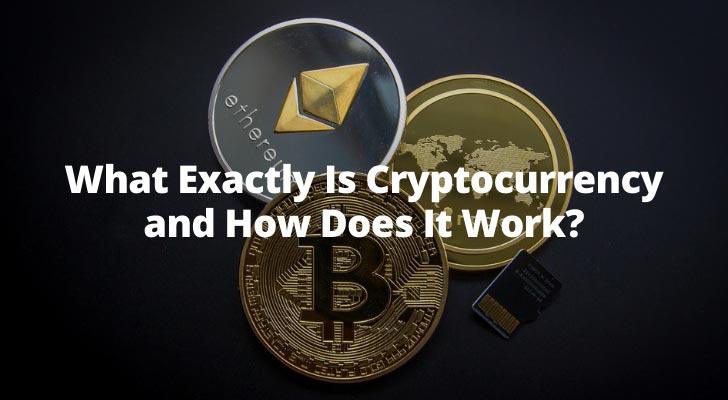Okay, imagine a currency that doesn’t live in your wallet or a bank, and there’s no physical cash involved. It’s all digital, floating around in cyberspace. That’s basically cryptocurrency. It’s a form of money that exists entirely online, and instead of being issued or controlled by a government, it’s decentralized, meaning no single authority controls it. Sounds kind of wild, right?
Cryptocurrencies work on something called blockchain technology. This is like a massive, super-secure digital ledger that records every transaction made with that currency. Think of it as a super long receipt that’s publicly available, but instead of one central person keeping track of everything, the responsibility is spread across thousands (sometimes millions) of computers, also known as nodes. That’s why it’s so tough to hack or mess with — you’d need to tamper with all those nodes at the same time, and that’s nearly impossible.
For a basic breakdown:
- Bitcoin was the first cryptocurrency and still the most well-known. It’s often referred to as digital gold because it was designed to have a limited supply.
- Ethereum is another big name in the crypto world, but instead of being just a currency, it’s a platform that supports smart contracts, which are like self-executing contracts.
- There are thousands of other cryptocurrencies out there, each with their own features and purposes. Some are for specific industries, while others aim to solve problems that traditional currencies can’t handle efficiently.

How Does Cryptocurrency Actually Work?
Let’s get into how this stuff moves around and how you actually use it. So, cryptocurrencies rely on blockchain technology. Imagine a huge book that everyone has a copy of, and whenever someone spends or receives cryptocurrency, that transaction gets written down in everyone’s book at the same time. The difference here is, this book is impossible to change once a transaction is written down. This system keeps everyone honest because there’s no going back and rewriting the past.
The process of sending or receiving cryptocurrency is pretty simple once you’re set up. You need a digital wallet — basically a super-secure app or device where your cryptocurrency is stored. This wallet has two keys: a public one (like your account number) and a private one (like your password). The public key is what you share with others when they need to send you money. The private key is how you access and move your funds.
Here’s a step-by-step idea of what happens when you make a transaction:
- You use your private key to sign off on a transaction, proving that you own the funds you're trying to send.
- That transaction is sent out to the network of computers (nodes) for verification. These computers work together to confirm that everything is legit.
- Once verified, the transaction gets added to the blockchain and becomes part of the public record.
- The money is sent from your wallet to the recipient's wallet, and the transaction is considered final.
It’s actually pretty cool how it all works behind the scenes, even though the process is lightning fast to the user. One weird thing though: once you send cryptocurrency, there’s no undo button. If you mess up the address or send it to the wrong person, there’s no bank to call to reverse the transaction.
Why Cryptocurrency Has People Buzzing
Why are people so into cryptocurrency? Well, for one, it’s decentralized, so there’s no middleman. You don’t have to worry about banks charging you fees or governments freezing your assets. It’s just you, your digital wallet, and the network. For some people, that level of control is incredibly appealing.
Another thing that gets people excited is that cryptocurrencies are global. You could send Bitcoin to someone in a different country in a matter of minutes, no bank wires or currency conversions needed. There’s also the fact that it’s not tied to any single country’s economy or government, so people see it as a hedge against inflation or political instability. It’s like an alternative to regular money, where the rules are different.
Here are some things that get people really hyped:
- It’s a lot easier to transfer large sums of money across borders compared to traditional banking methods. No need to worry about exchange rates or bank fees.
- There’s a sense of privacy with cryptocurrency. While transactions are public, your name isn’t attached to your wallet’s public key, so your identity remains somewhat hidden.
- People love the idea that cryptocurrencies are censorship-resistant. No one can stop a transaction from happening, so it’s appealing in situations where governments are prone to freezing assets.
The Weird Part: Mining Cryptocurrency
Now, here’s where things get a little bonkers. Have you heard of mining? This is the process that keeps cryptocurrencies like Bitcoin running. Mining is how new coins are created and how transactions are verified on the blockchain. But instead of pickaxes and shovels, miners use powerful computers to solve complex math problems. The first one to solve the problem gets to add the new block of transactions to the blockchain and, as a reward, they get some newly minted cryptocurrency.
This mining process is actually pretty energy-intensive. People all over the world have set up mining rigs — basically, huge rooms filled with computers — to try and solve these math problems faster than anyone else. The downside? It eats up an insane amount of electricity. There’s even been talk about Bitcoin using more energy than some small countries, which is kind of crazy when you think about it.
Things that are kind of mind-blowing about mining:
- People have set up entire businesses just dedicated to mining, with warehouses full of computers running 24/7 to crank out new coins.
- The difficulty of mining increases over time, so it gets harder to solve the problems and earn rewards as more people join in.
- While mining is lucrative, it’s also a bit of a gamble. You’re investing in expensive equipment and high electricity bills, all with no guarantee of a big payout.
Cryptocurrency Revisit
When people talk about cryptocurrency, they usually think of Bitcoin, but there’s a whole world of other cryptocurrencies out there. Some of these have wildly different uses and goals. Ethereum, for example, is huge not just because of its currency, Ether, but because it supports smart contracts. These are self-executing contracts that automatically complete once certain conditions are met. It’s like cutting out the middleman in legal agreements.
Then there’s Ripple (XRP), which focuses on faster international payments, and Litecoin, which aims to process transactions faster than Bitcoin. Each cryptocurrency is trying to solve different problems, so it’s not just a one-size-fits-all deal.
A few different cryptocurrencies and what they do:
- Ethereum: Besides being a currency, it’s a platform for creating decentralized apps and smart contracts.
- Ripple: Focuses on making international money transfers super fast and super cheap, especially for banks.
- Litecoin: Designed to be quicker and cheaper to transact than Bitcoin, with shorter block generation times.
The Hype and the Risks
Cryptocurrency has made a lot of people rich — or at least that's the story everyone hears about. You see stories of someone buying a pizza with Bitcoin back when it was worth just a few dollars, only to watch its value skyrocket years later. The truth is, though, cryptocurrency is still extremely volatile. Prices can swing wildly in a matter of hours. It’s not like traditional stocks or currency where things tend to move gradually.
One day, you might see Bitcoin hit a record high, and the next, it crashes by 30%. It’s a bit like a rollercoaster, and if you’re the type who stresses over your investments, this isn’t the most relaxing way to store your money.
What makes it risky:
- There’s no FDIC insurance or safety net if you lose your crypto. If your digital wallet gets hacked or you lose access to your private key, those funds are gone forever.
- The value of cryptocurrencies can swing dramatically, so it’s not something you want to rely on for stable savings.
- Scams and fraudulent coins pop up frequently. Since the whole market is relatively new and unregulated, it’s easier for shady projects to take advantage of people.
Final Thoughts: Is Cryptocurrency the Future?
So, will cryptocurrencies replace regular money one day? It’s hard to say. Right now, it's still in the early stages, and there are definitely bumps in the road, like price volatility, regulatory uncertainty, and environmental concerns over mining. But there’s no doubt that cryptocurrencies are here to stay in one form or another. Whether they’ll become as widespread and reliable as the dollar or euro? That’s still up in the air. For now, it’s a fascinating experiment, and one that’s worth keeping an eye on.
Supercharge Your AWeber Account
Take Your Email Marketing To The Next Level With These Powerful Tools


